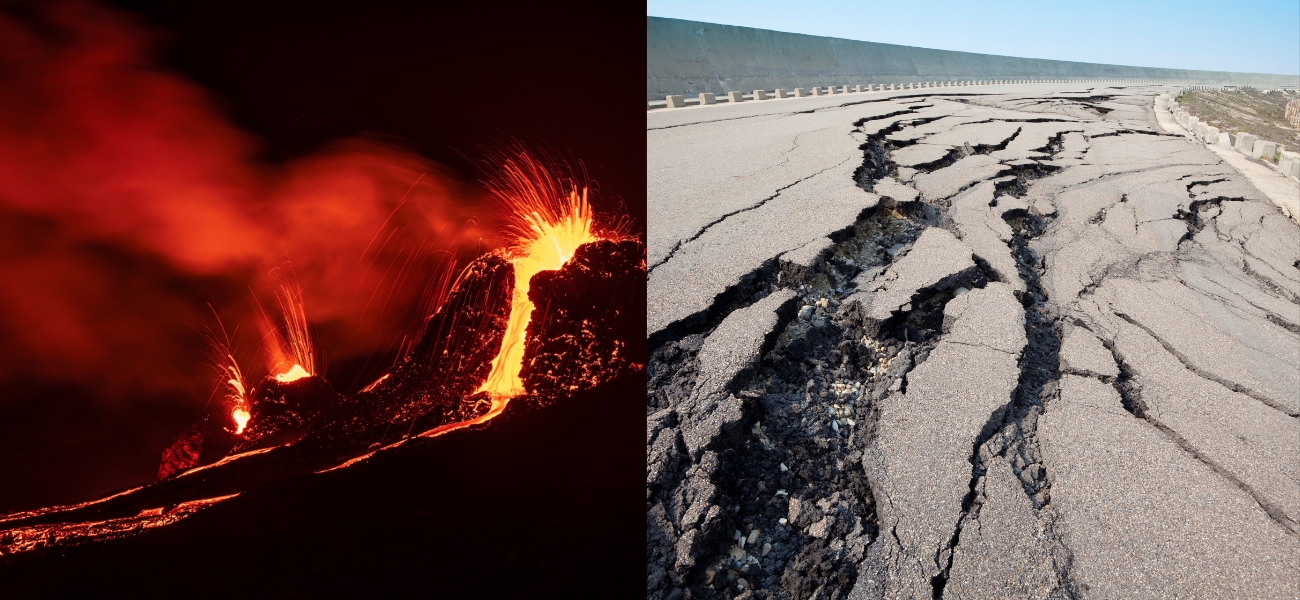Iceland Considers Pumping High-Volume Water On To Lava To Avert Volcanic Threat
By Favour Adegoke on November 23, 2023 at 2:44 PM EST

Officials in Iceland are considering preemptive water pumping to divert potential lava threatening the town of Grindavík. Similar tactics in 1973 on Heimaey proved effective.
Head of civil protection, Víðir Reynisson, announced European experts' arrival to assess feasibility. Grindavík, evacuated due to seismic activity, faces volcanic risks near the Svartsengi plant and Blue Lagoon. Residents were allowed a brief entry for essentials.
Iceland, with 33 active volcano systems, encounters eruptions every 4-5 years. Recent Reykjanes eruptions signal a prolonged period of volcanic activity.
Iceland's Preemptive Defense Strategies Includes Pumping Water On Lava
This is Grindavík today.
It remains evacuated. Roads are damaged. Residents have been allowed quickly to collect possessions in a controlled police operation. We were able to access briefly escorted by police. Steam is rising from damaged water pipes. #Iceland #grindavík pic.twitter.com/AGM8Tgj0lm— Laura Goehler (@LauraGoehler) November 15, 2023
Icelandic officials are reportedly contemplating a strategy involving pumping water onto potential lava in case of an imminent volcanic eruption that has been threatening the town of Grindavík.
This proactive measure aims to cool and redirect the lava flow, safeguarding the fishing port and its 4,000 residents on Iceland's Reykjanes peninsula.
According to The Guardian, this technique was successfully employed in 1973 during a volcanic event on the Island of Heimaey to slow down and manage the lava's expansion, where a fissure erupted just 150 meters from the town center.
On Wednesday, Víðir Reynisson, Iceland's head of civil protection and emergency management, stated that authorities, along with European experts, will evaluate the feasibility of deploying high-volume pumping to cool the lava and safeguard the town of Grindavík and critical infrastructure.
Reynisson added, "An assessment technical team will arrive in Iceland tonight or tomorrow morning and they will assist us in assessing the possibilities."
Icelandic Fishing Town, Grindavík Evacuated Amid Volcanic Activity
Iceland - Volcano. Here the earth shaking moves a rock towards the lava 🌋 pic.twitter.com/etDXQvuxnS
— 🇬🇧RonEnglish🇬🇧🏴 (@RonEng1ish) November 16, 2023
On November 11, residents of Grindavík were evacuated following seismic activity signaling a probable volcanic event. Since then, the region has experienced hundreds of earthquakes and numerous minor tremors, prompting authorities to explore ways to mitigate potential volcanic hazards.
Grindavík is situated near the Svartsengi geothermal plant, which serves as the primary provider of electricity and water to approximately 30,000 residents residing on the Reykjanes peninsula, along with housing a freshwater reservoir.
The town is also near the Blue Lagoon geothermal spa resort, a well-frequented tourist attraction that has been temporarily closed as a precautionary measure.
In recent days, authorities have actively undertaken reinforcement efforts around the Svartsengi plant to fortify its defenses in anticipation of a potential eruption.
Residents Of Icelandic Fishing Town, Grindavík Allowed To Return Home For Five Minutes
#WATCH : The crack in the ground is getting bigger with the passage of time in Grindavik in Iceland.#Iceland #icelandvolcano #Icelandearthquake #IcelandNews #Earthquake #Grindavik #Iceland #earthquakes #eruption #VolcanoEruption #GrindavikTown #Reykjavík #reykjavik #latestnews… pic.twitter.com/Bc3C06ZOd8
— upuknews (@upuknews1) November 18, 2023
Following the evacuation, residents of Grindavík received brief permission in a 5-minute entry window to return home temporarily for essential items and pets amid warnings from experts about a potential volcanic eruption within days or hours.
The civil defense force in Iceland described the operation as "planned and controlled" under police orders. The residents were escorted by emergency vehicles and civil defense workers, who cautioned not to drive towards Grindavík at all". They added: "This is a responsibility and not a trivial decision."
A coastguard helicopter was on standby, circling the Þórkátlustað district of the town, prepared to evacuate residents if the volcano were to erupt while they were retrieving pets and necessary belongings.
800-Year-Old Formally Dormant Volcanic System Becomes Active
iceland volcano wall © 🚧🚜🏗️ pic.twitter.com/JNKAlwgUdt
— Birkir (@birkirh) November 20, 2023
Situated above a volcanic hotspot in the North Atlantic, Iceland is accustomed to regular volcanic activity. The Land of Fire and Ice is home to an impressive 33 active volcano systems, marking the highest count in Europe, and eruptions occur approximately every four to five years on average in the country.
Notably, a volcanic system on the Reykjanes peninsula, which lay dormant for 800 years, has erupted three times since 2021. Previous eruptions, while frequent, took place in remote valleys and didn't result in substantial damage.
The 2010 eruption of Eyjafjallajökull was a notable disruption, causing widespread flight cancellations across Europe due to concerns about ash damaging airplane engines. Scientists now believe that a new eruption, if it occurs, would likely produce lava without generating a significant ash cloud.
Irrespective of whether this specific magma occurrence triggers an eruption, researchers believe that this area in Iceland is entering a new phase of volcanic activity that might persist for decades or even centuries.